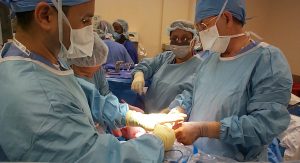 Teamwork is everywhere in the adult world. Everything from managing a house to running a business, working in an office space to designing and managing projects leans heavily on being able to put together and work in teams. In the end, there is no getting around the fact that at some point in life, everyone will have to some teamwork to deal with.
Teamwork is everywhere in the adult world. Everything from managing a house to running a business, working in an office space to designing and managing projects leans heavily on being able to put together and work in teams. In the end, there is no getting around the fact that at some point in life, everyone will have to some teamwork to deal with.
The good news is that most people don’t have too much trouble working in teams. Sure, there are a few (like me) that prefer to work alone, but even they can do it for the short-term of a project. But just because we can do it, are we really doing the best we can in teams? Here are some tips and tricks for making the most of teamwork.
Understand how personalities interact.
Not everyone is going to work or behave the same way. And that’s a good thing; you’re going to need these diverse strengths to work together effectively to get the best results. It’s a challenge to get people with diverse habits to come together and work efficiently, but the results are well worth it.
In any given project you need a variety of people with strong skills that can work together. For example, some people have naturally stronger leadership skills, while others delve more into data and research. The leaders can help organise people, meeting times, make sure that tasks are being done on time, etc. The data oriented people contribute by gathering data and synthesising it for use.
But there are some nuances to consider.
Of the leaders, you might have one that is more people oriented, and another that is more goals driven. The one that is people oriented takes care of people’s needs and acts as a glue to keep the group working cohesively, while the type that is goals driven keeps people from falling behind.
There are many different types of personalities, behaviours, and tendencies in people. And many of them overlap. We’ve noticed that people, even children, can pick up on the strongest tendencies, but they don’t pick up on the subtle ones very well. For example, they may realise that someone is a “research” type of person, but may not pick up on the fact that this researcher is also very creative and would put together an amazing presentation. Getting better at teamwork means being able to pick up on these subtleties as well.
Teamwork is a challenge and takes practise.

Teamwork, by its very nature, means working with people for a goal. However, not all people may want to reach the same goal in the same way. They may not work in the same way or at the same pace. This is what makes it difficult for even the most gifted leader to lead well. It takes time, practise, and getting used to working with other personality types.
Now, while you could use the Myers-Briggs personality diagnostic for teaching children about personality types, I think it’s too generalised and restricting. I’ve seen people take it one day and get a result, but a few weeks later they would get a very different result. It was all based on their mood at the time. That’s why if I’m going to use a personality type survey, I prefer the DISC method. It tends to capture more of a person’s tendencies are.
But let’s get real, you aren’t going to be able to stop everything and everyone to get a personality survey done in real life. That’s why I like using a different method I learnt about from The Most Dangerous Business Book You’ll Ever Read. In this method you look at tendencies of a person, such as if they are more altruistic or more selfish, more for a group or more individualistic.
Knowing a person’s tendency in teamwork helps everyone, no matter their strengths or role, work with the others. They can find it easier to predict how their teammates reactions to the workload demands.
